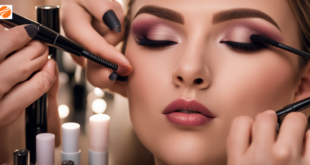
Combination skin can often feel like a balancing act. It features both oily areas, typically in the T-zone (forehead, nose, and chin), and dry or normal patches, often around the cheeks and jawline. To keep combination skin healthy and balanced, it’s important to find a skincare routine that addresses these contrasting needs without over-drying or over-hydrating. This blog will guide you through the best skincare routine for combination skin, using dermatologist-approved tips and the latest information to help you manage both oily and dry areas effectively.
Table of Contents
1. Start with a Gentle Cleanser
Cleansing is the first step in any skincare routine, and for combination skin, it’s essential to choose a cleanser that can balance both oily and dry areas without causing irritation. The goal is to remove excess oil from the T-zone while keeping the drier areas hydrated.
How to Cleanse Combination Skin:
- Choose a Gentle, pH-Balanced Cleanser: Opt for a sulfate-free cleanser that won’t strip your skin of its natural oils. Look for gel or foam-based cleansers that can effectively clean the skin without over-drying.
- Avoid Harsh Ingredients: Stay away from harsh ingredients like alcohol or strong acids that can dry out your skin further or trigger excess oil production.
Dermatologists recommend cleansing your face twice daily—once in the morning to remove excess oil and once at night to wash away makeup, dirt, and impurities.
2. Toning: Balance Oil Production
Toners help remove any leftover impurities after cleansing and can also balance your skin’s pH levels. For combination skin, a lightweight, alcohol-free toner can help hydrate dry areas while controlling oil production in the T-zone.
How to Choose a Toner for Combination Skin:
- Hydrating Toners: Look for toners that contain hydrating ingredients like glycerin or hyaluronic acid to maintain moisture balance in drier areas.
- Oil-Control Toners: For oily zones, toners containing mild astringents like witch hazel or salicylic acid can help reduce excess oil without over-drying your skin.
Apply toner with a cotton pad or gently pat it into your skin using your fingertips.
3. Exfoliation: Focus on Gentle, Regular Exfoliation
Exfoliating your skin is crucial for combination skin to prevent clogged pores in oily areas and flakiness in dry areas. However, over-exfoliating can lead to irritation or worsen dryness.
Exfoliation Tips for Combination Skin:
- Use Chemical Exfoliants: Gentle chemical exfoliants like AHAs (alpha hydroxy acids) or BHAs (beta hydroxy acids) are better for combination skin than harsh physical scrubs. AHAs help slough off dead skin cells, while BHAs penetrate and clear out excess oil from pores.
- Frequency: Limit exfoliation to 1-2 times per week to avoid disrupting your skin’s natural moisture barrier.
Regular exfoliation helps smooth the texture of your skin and allows your other skincare products to penetrate more effectively.
4. Targeted Treatments: Use Serums to Address Both Oily and Dry Areas
Serums are lightweight, fast-absorbing liquids that deliver potent ingredients deep into the skin. For combination skin, it’s helpful to use different serums to address the varying needs of your skin.
Best Serums for Combination Skin:
- Hydrating Serums: Apply a hydrating serum with hyaluronic acid to dry areas of your face (like your cheeks and jawline) to lock in moisture and prevent flakiness.
- Oil-Control Serums: For the oily areas, use serums with niacinamide or salicylic acid, which help regulate oil production and keep pores clear.
You can apply serums selectively, focusing on specific areas that need more attention. Layering serums is also effective if you have multiple skin concerns.
5. Moisturize with a Lightweight, Non-Comedogenic Formula
Moisturizing is key to maintaining the health of combination skin, but it can be tricky to find a product that hydrates dry areas without clogging pores in oily spots. The solution is to use lightweight, non-comedogenic (non-pore-clogging) moisturizers.
Moisturizer Recommendations for Combination Skin:
- Gel-Based Moisturizers: Gel-based moisturizers are excellent for combination skin because they provide hydration without feeling heavy or greasy. Look for products containing ingredients like hyaluronic acid or aloe vera for lightweight moisture.
- Oil-Free Options: For oily areas, opt for oil-free moisturizers that won’t exacerbate shine or clog pores.
Moisturizing twice a day—morning and night—keeps your skin hydrated and balanced throughout the day and night.
6. Sunscreen: Daily Protection Against UV Damage
Daily sun protection is a must for all skin types, and combination skin is no exception. Sunscreen helps protect against harmful UV rays that can lead to premature aging, hyperpigmentation, and skin damage.
How to Choose the Best Sunscreen:
- Look for Oil-Free, Broad-Spectrum SPF: Choose an oil-free, broad-spectrum sunscreen with SPF 30 or higher to protect against both UVA and UVB rays. Sunscreens with zinc oxide or titanium dioxide are great for combination skin, as they offer protection without clogging pores.
- Non-Greasy Formulas: Opt for sunscreens that have a matte finish or are labeled as non-greasy to avoid adding extra shine to your oily areas.
Remember to reapply sunscreen every two hours if you’re outdoors, especially if you’re sweating or swimming.
7. Face Masks: Treat Your Skin Weekly
Face masks can offer a deeper treatment for combination skin. Using a mask once or twice a week can help address specific concerns like oiliness, dryness, or irritation.
Face Mask Options for Combination Skin:
- Clay Masks for Oily Zones: Use a clay mask on your T-zone to absorb excess oil, detoxify the pores, and prevent breakouts. Kaolin or bentonite clay are gentle and effective options for combination skin.
- Hydrating Masks for Dry Areas: On the drier parts of your face, like your cheeks, use a hydrating mask that contains ingredients like aloe vera, glycerin, or honey to soothe and replenish moisture.
Consider using multi-masking, where you apply different types of masks to different areas of your face based on their unique needs.
also read Top 10 Herbal Teas for Health
Conclusion: Achieving Balance with the Right Skincare Routine for Combination Skin
Caring for combination skin may require a little extra attention, but with the right routine and products, you can achieve a balanced, healthy complexion. Focus on gentle cleansing, targeted treatments, and lightweight moisturizers to address both oily and dry areas. Incorporating these expert tips into your daily routine will help keep your skin clear, hydrated, and glowing. Remember, consistency is key—stick to your routine, and your skin will thank you!
click here for more info
FAQs
1. How can I manage both oily and dry areas on my face?
By using different products for each area—such as lightweight moisturizers for oily zones and richer creams for dry spots—you can balance your skin’s needs more effectively.
2. How often should I exfoliate combination skin?
Dermatologists recommend exfoliating combination skin 1-2 times per week with a gentle chemical exfoliant to avoid over-exfoliation.
3. Can I use the same moisturizer for both oily and dry areas?
Yes, but it’s best to choose a lightweight, non-comedogenic moisturizer that hydrates without clogging pores. You can also apply a richer cream to dry areas and a lighter formula to oily zones.
 Health live a Healthy life
Health live a Healthy life





